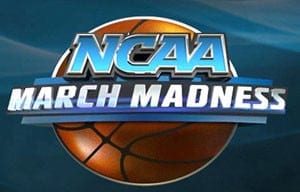 It should come as a shock to no one: viewership of regularly scheduled television programming is floundering. Even Nielsen admits as much: in a 2014 year-end roundup, they reported that “consumers’ time and attention around media is in flux.” For mobile marketers who understand these changes in media consumption, opportunity knocks.
It should come as a shock to no one: viewership of regularly scheduled television programming is floundering. Even Nielsen admits as much: in a 2014 year-end roundup, they reported that “consumers’ time and attention around media is in flux.” For mobile marketers who understand these changes in media consumption, opportunity knocks.
Nielsen’s report pointed to digital video, including native digital, TV-produced, and subscription-based video on demand, as contributors to the change. But what the drumbeat of prognostications declaring traditional television dead fails to recognize is that televised live events are stronger than ever. The most-watched television program in history, this year’s Super Bowl, brought in an estimated 114.4 million viewers. Award show viewership is on the upswing, recovering from years of steady decline. And the 2015 March Madness tournament ratings are at a 25-year high.
With multiple games taking place at the same time, and a plethora of buzzer beaters, upsets, and oh-my-god-did-you-see-that moments, the NCAA basketball tournament commands multiple screens to experience and share it all. Each week, Nielsen publishes Twitter TV Ratings (tallying which programs brought the greatest amount of Twitter activity) and during the tournament’s run, individual games occupied all ten ranked spots. Considering that an estimated 75% of all Tweets originate from mobile, it’s not unreasonable to assume that March Madness’ record-setting number of viewers are using smartphones and tablets in lockstep with watching the televised action.
This trend of live participation presents a perfect opportunity for marketers. To fully capitalize, marketers should consider the following strategies.
Get a Head Start
Almost every March Madness telecast is peppered with in-game promotions, most of which direct viewers to download the network’s bracket app. An estimated 90M people complete a bracket each year, meaning that even if a small fraction of the viewership follows the suggestions, millions of users could flood the app store during games. With a little forethought, piggybacking on this influx is easy—and potentially lucrative.
It works like this: Because viewers are prompted from their television (as opposed to having a direct link), they must navigate to the sports section of the app store, seeing not only the network’s own app, but a host of other related apps as well. By making sure your app is among them, it could easily steal away some of the bracket-seeking users. To do so, apps should run an incent-heavy burst campaign in the days leading up the event, climbing up the charts and into a ranking in proximity to the heavyweights—all without the exuberant costs of advertising during a live event.
Tailor your creatives
Another excellent strategy is to custom tailor your creatives to the specifics of an event. For example:
- In the hours leading up to tip-off, creatives with a “be ready for the tournament” theme should run. These would be highly targeted, built on capabilities like custom audiences, and intended to encourage those interested in March Madness to download.
- During the games, creatives with a “now happening, check your bracket” theme would appear.
- Finally, a retargeting campaign should be run in a period sometime after the first games, helping to reengage users in anticipation of the next phase of the tournament.
Ads that are contextual and timely provide a much stronger pull for users to engage.
Live Event, Live Promotions
Nothing rivals the immediacy of the social networks, just look at some of the shared reactions to this year’s Michigan State-Louisville OT thriller. Any marketer should jump at the chance to be a part of the conversation – and today’s mobile marketing technologies make it possible.
One marketer with a sports app ran promotions during a major all-star game. When a particular player performed in a way that that led to a surge of Tweets and hash tags, they launched custom-tailored creatives targeted at precise audiences: fans of the player, the sport, and the all-star game. This particular campaign, despite only comprising 32% of their total media spend, drove 78% of all sales, and lead to a total ROI of more than 300%.
And while we have used March Madness as an example, these strategies are not limited to sports brands or apps, but rather ring effective for nearly any industry. A clothing retailor could customize creatives to coincide with the pre-Oscar red carpet fashion show. Or a game app could plan their campaigns to run during the widely covered annual E3 expo. Whatever your industry, those key moments that combine live TV and mobile provide a chance to reach target customers at a much lower cost than the premiums you’d pay for TV ads.
Scheduled television as we know it might be dying a long, painful death. But the live events that draw in viewers and spur national conversation are doing better than ever. It’s time to take advantage.
Craig Palli is the chief strategy officer of Fiksu.
 Network
Network

